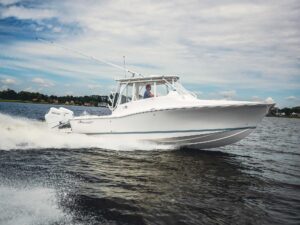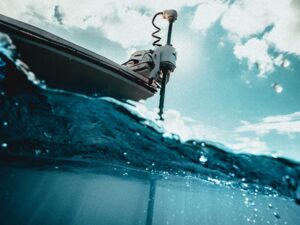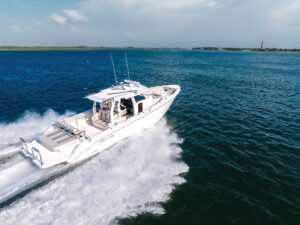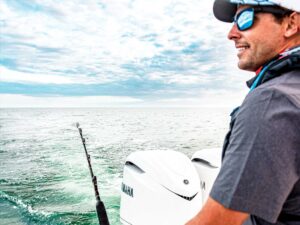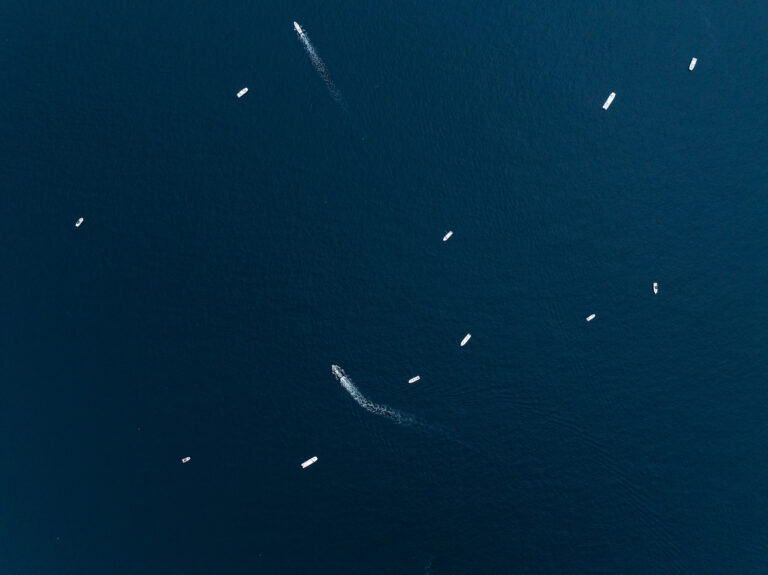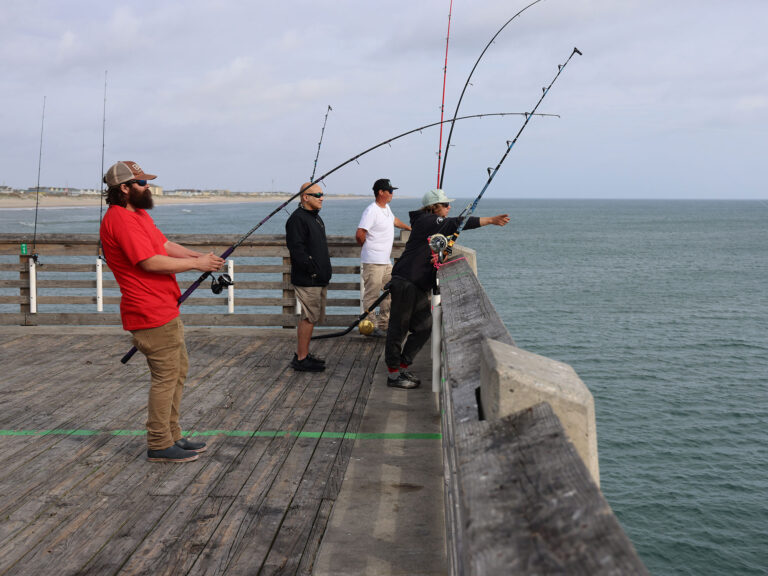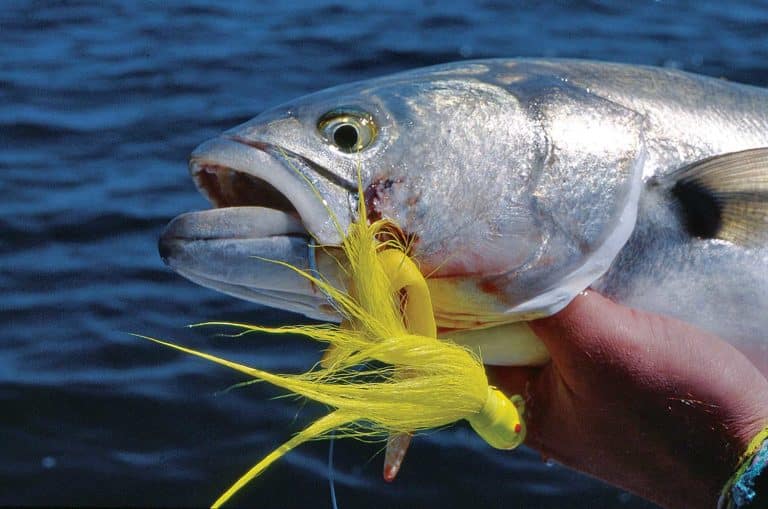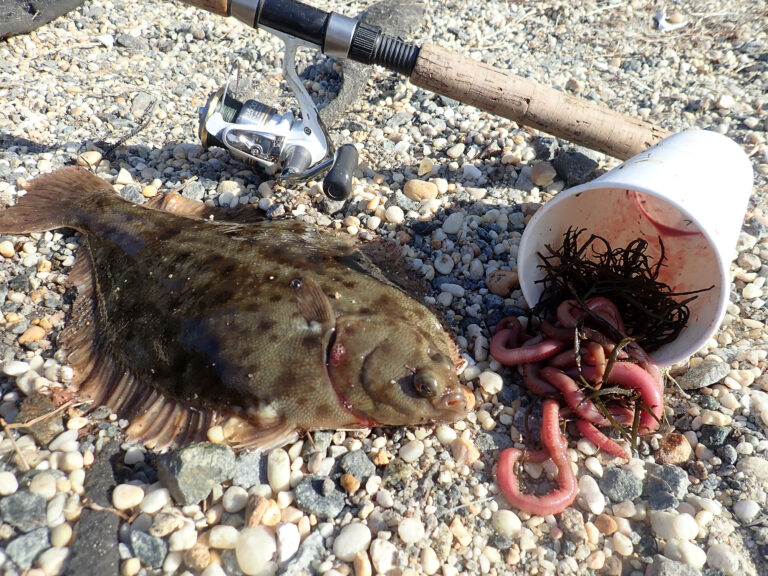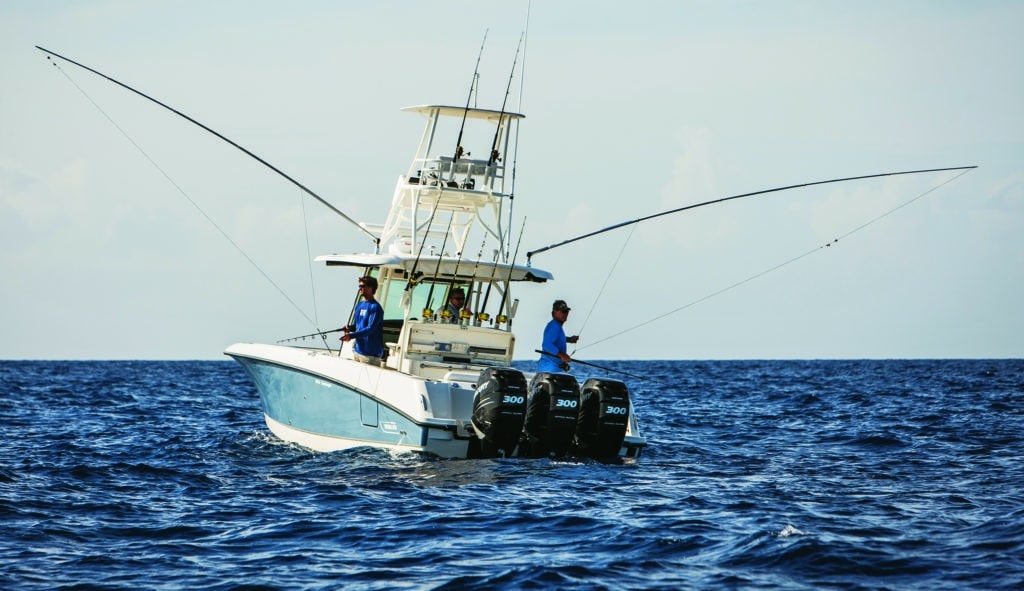
Outrigger Insight: The Latest in ‘Rigger Mounts, Poles and Accessories
Few angling moments rival the heart-pounding rush of an outrigger strike — the snap of a release clip, the recoil of a rigger pole, line zinging from a reel.
For decades, outriggers have proven invaluable in presenting the biggest, most appealing spread of lures or baits possible while trolling for species such as dolphin, kingfish, marlin, sailfish and wahoo.
Today, thanks to advances in mounts, poles and hardware, outrigger systems are lighter, more effective and simpler to use than ever before. Whether you fish from a 20-footer or 50-footer, there’s a set of riggers for you.
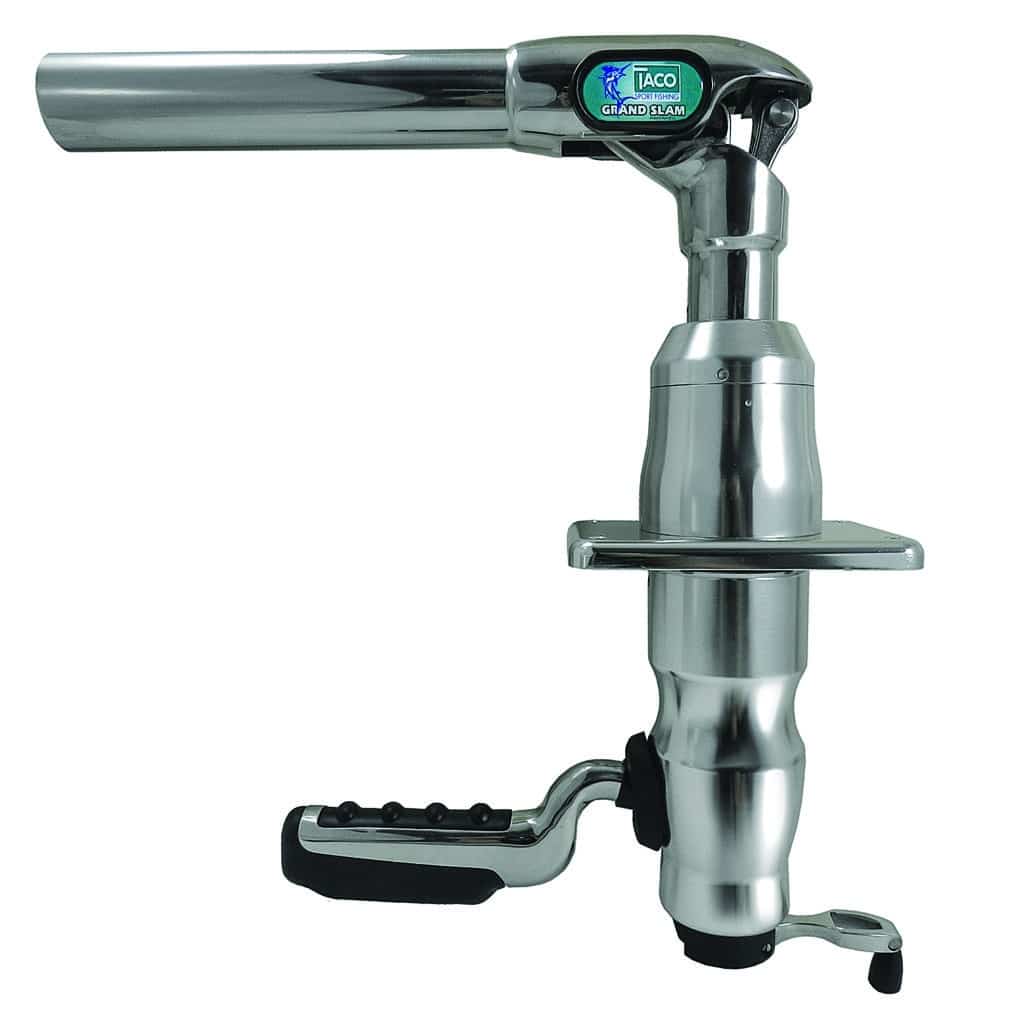
Taco Marine Grand Slam 380 Outrigger Mount
Rigger Mounts
While manufacturers offer outriggers that mount on the gunwales or cabin sides, most center-console fishing boats utilize mounts that bolt to a hardtop or the underlying frame of a fabric T-top, says Jose Chao, strategic product category manager for Miami-based Taco Marine, a leader in outrigger systems.
“Some of the most important advances have occurred in mounts that allow you to deploy and retract the poles from underneath the top, rather than standing on a gunwale to adjust an outrigger,” says Chao.
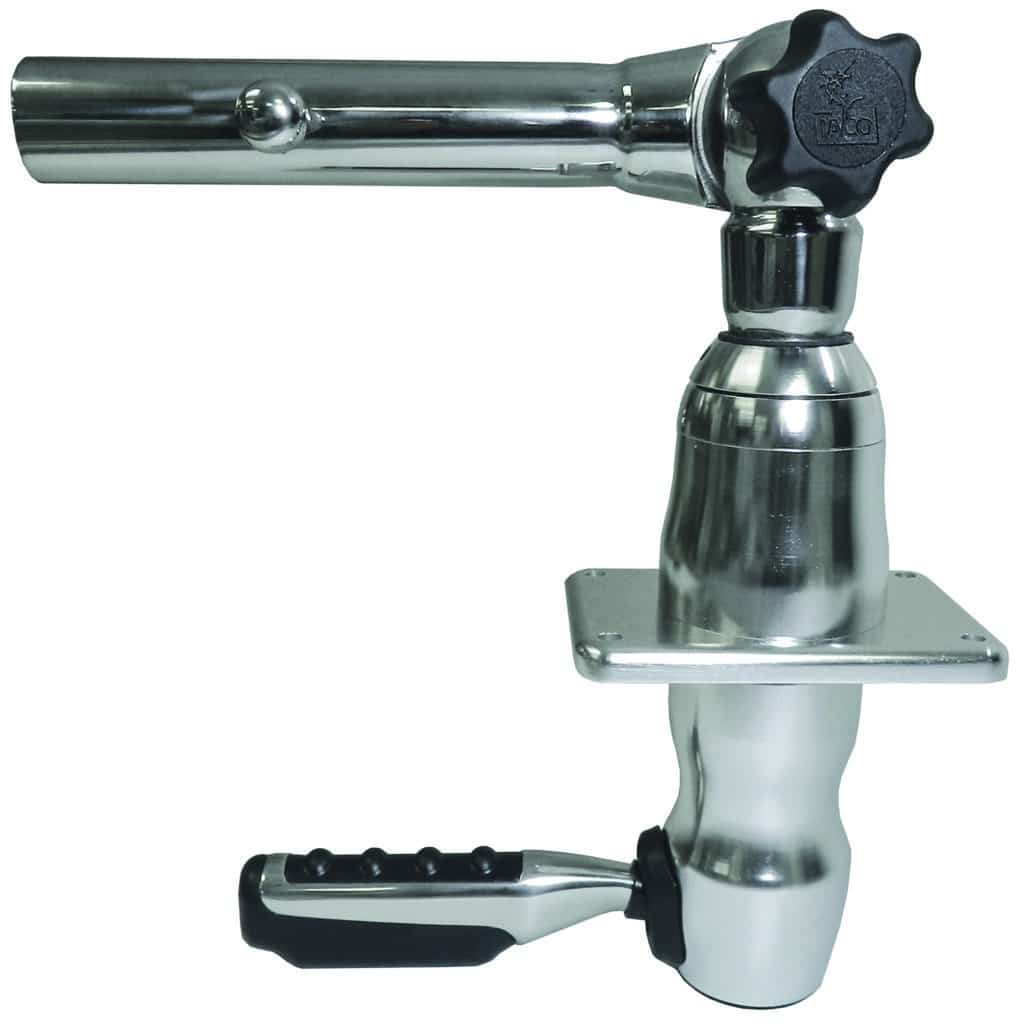
Taco Marine Grand Slam 280 Outrigger Mount
The popular Taco Marine Grand Slam 280 mounts (about $1,000 per pair), for example, let you pivot the outrigger poles by pulling down on a handle mechanism under the top and swiveling the base. Once the outrigger is where you want it, release the handle to lock it in position.
Lee’s Tackle Sidewinder (about $900 per pair), Rupp Marine Revolution Top Gun (about $1,100 per pair) and Tigress TigerFish II (about $1,200 per pair) mounts operate in a similar manner. Yet none of these let you adjust the vertical angle of the rigger pole from under the top. For that you need a mount such as the Taco Grand Slam 380 (about $1,800 per pair) or Tigress TigerShark LineRigger ($2,000 to $2,100 per pair). Taco’s 380 features an elevation crank below the swing handle, while TigerShark synchronizes the elevation adjustment with pivoting action as you turn the crank handle. The Tigress TigerShark I LineRigger (about $2,700 per pair) goes a step further, offering a motorized system that fully deploys outriggers at the press of a button.
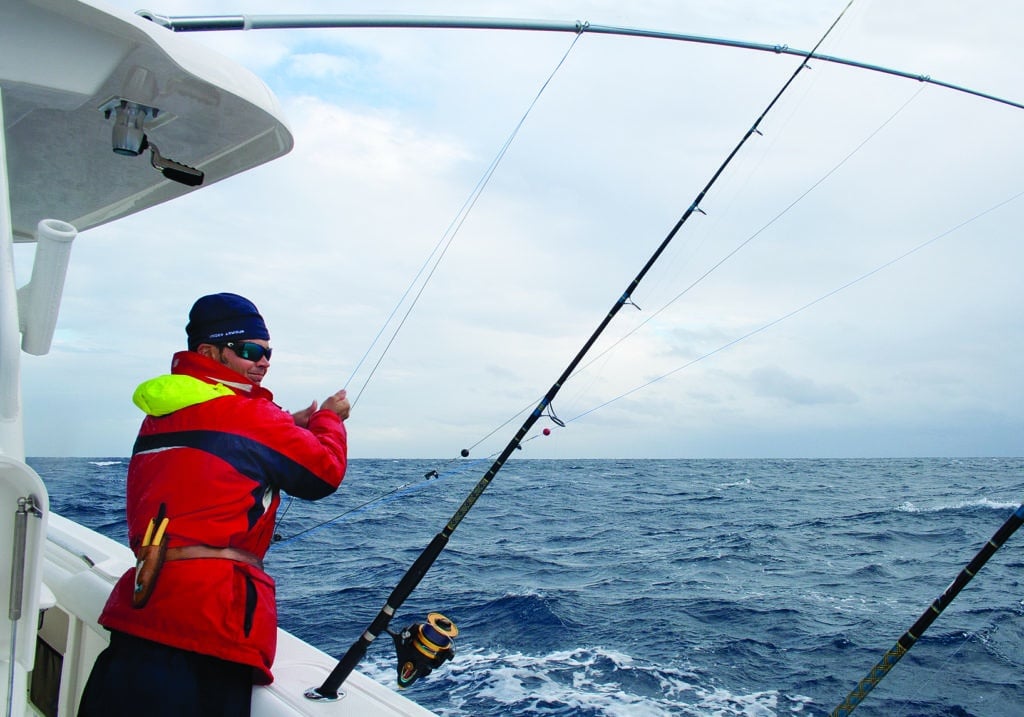
New User-Friendly Outrigger Systems
Pick a Pole
The most popular outrigger poles on today’s center-consoles are telescoping models made from lightweight anodized aluminum, which cost $350 to $750 per pair, depending on the brand and length.
The length of the pole you choose hinges largely on the size of the boat and number of halyards you plan to fish. As a rule, 15- to 16-foot poles are about right for boats in the 21- to 26-foot range, while 18- to 20-foot poles fish nicely on boats over 26 feet in length, says Chao.
“If you plan on fishing one or two halyards from each outrigger, the shorter poles work well, but for fishing up to three lines, you need the longer poles,” Chao adds.
The telescoping feature lets you retract the poles to about a third of their extended length for storage, trailering, bridge clearance or docking. A four-section Taco Tele-Outrigger 15-footer, for example, collapses to about 5½ feet. Spring-loaded tabs lock the pole sections in place when extended.
A number of companies now offer poles made from carbon fiber, which is lighter and stiffer than aluminum. “The stiffness is important because it minimizes whipping action in rough seas, which tends to yank lures and baits and spoil their actions while trolling,” explains Chao.
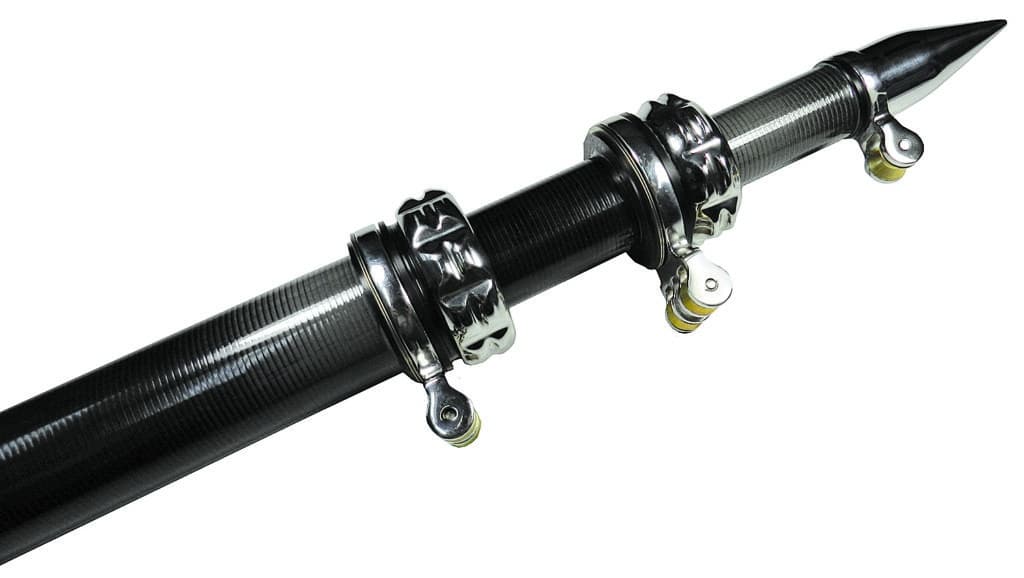
Carbon-Fiber Outrigger Poles
Taco has equipped its three-section carbon-fiber Tele-Outriggers (about $1,400 to $1,700 per pair) with roller guides rather than traditional ringed eyelets as standard equipment.
“In our research, we found anglers replacing eyelets with rollers adapted from sailing hardware for smoother action when running the lines up and down,” says Chao. “So we decided to use rollers on our carbon-fiber poles as standard equipment.” A patent-pending design allows the roller guides to swivel to follow trolling lures as the boat turns.
Rupp offers stationary roller guides, known as Pulley Clusters, as upgrades for its outriggers. Prices start at $85 for a single roller guide.
While you can run multiple halyards through ringed eyelets, roller guides require multiple pulleys. On three-section poles designed for fishing three halyards, for instance, you typically need three rollers on the first guide, two rollers on the middle guide, and one roller on top.
Carbon-fiber poles cost more than twice as much as equivalent aluminum models, and the composite material is prone to UV damage, so it’s important to protect carbon-fiber outriggers from the sun and would-be thieves by removing them from the boat between trips. Nearly all outriggers — aluminum or carbon fiber — feature quick-release mechanisms that allow you to easily remove the poles.
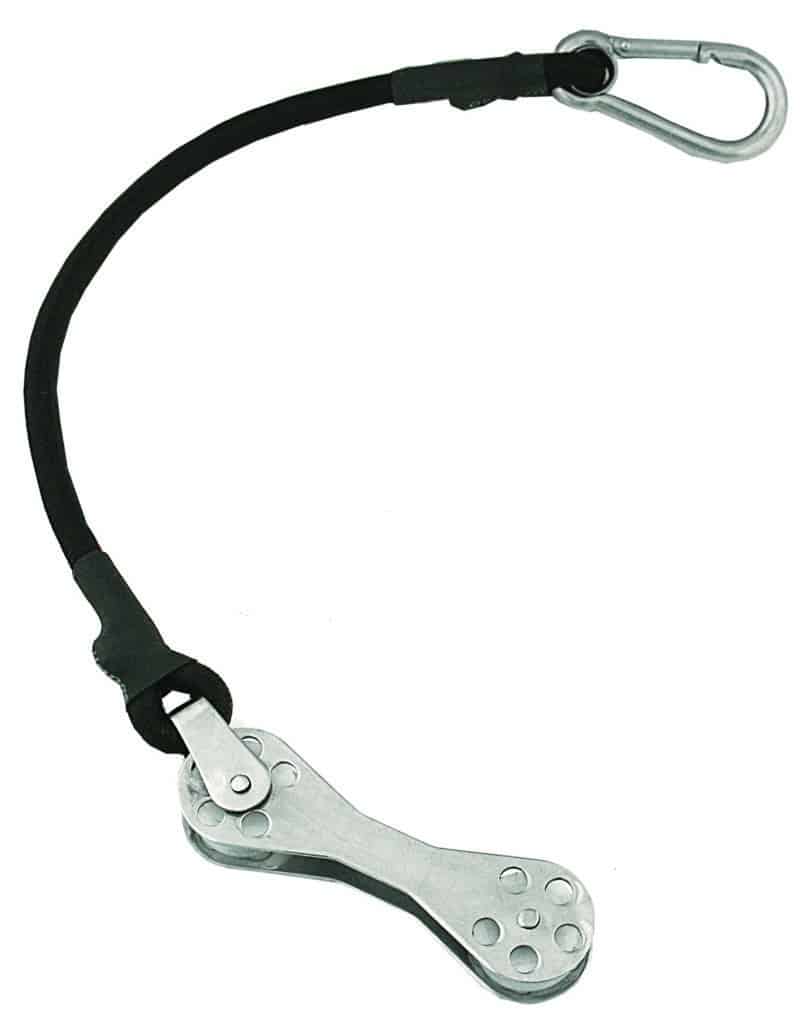
Taco Marine Double Halyard Pulley Shock
Custom Rigging
Though a great many outriggers come with rigging kits, anglers often use upgraded components. One of the most common custom touches is the use of 400-pound-test monofilament instead of cord when fishing multiple halyards. With three halyards, for instance, you can use shades such as red, blue and yellow to quickly identify each.
Deluxe locking pulleys at the end of the halyard-tensioning shock cords are another common upgrade. Hal-Lock’s HL3 ($60) and Rupp’s Triple Halyard Lock ($69) accommodate three halyards. The locking mechanisms prevent slippage once you set the trolling spread.
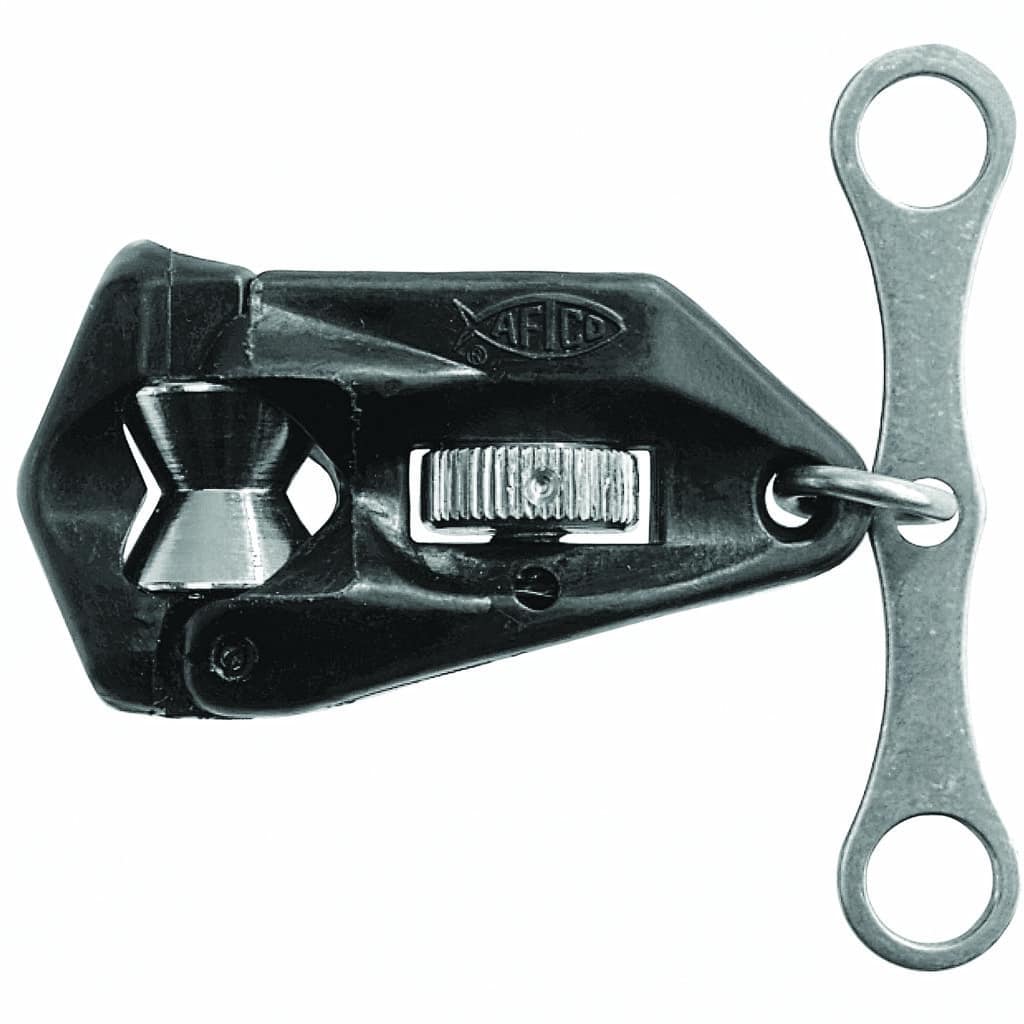
AFTCO Roller-Troller
Some anglers turn to upgraded release clips featuring rollers (versus a wire retainer) to minimize line chafe and tension adjustments to fine-tune the release point. Two of the best known include the AFTCO Roller-Troller (about $45 per pair) and the Rupp Nok-Out (about $50 per pair).
While anglers have traditionally secured the shock cords to the gunwale, an increasing number of center-console fishermen are choosing to clip them to the hardtop or T-top. While this makes it a bit more difficult to set lines, it also keeps halyards from interfering with the ability to fight a fish down the side of the boat.
To facilitate this trend, Taco has introduced an adjustable line-roller caddy, which adds two sets of rollers to the bottom section of carbon-fiber Tele-Outriggers. This clamp-on device also lets you wrap up the halyards and minimizes tangles when the outrigger is retracted.
With an increase in the number of effective and convenient features, outriggers have never been easier to use. If you don’t have a set, now’s the time to get them. You won’t regret it, especially after you experience the thrill of an outrigger strike aboard your boat.

